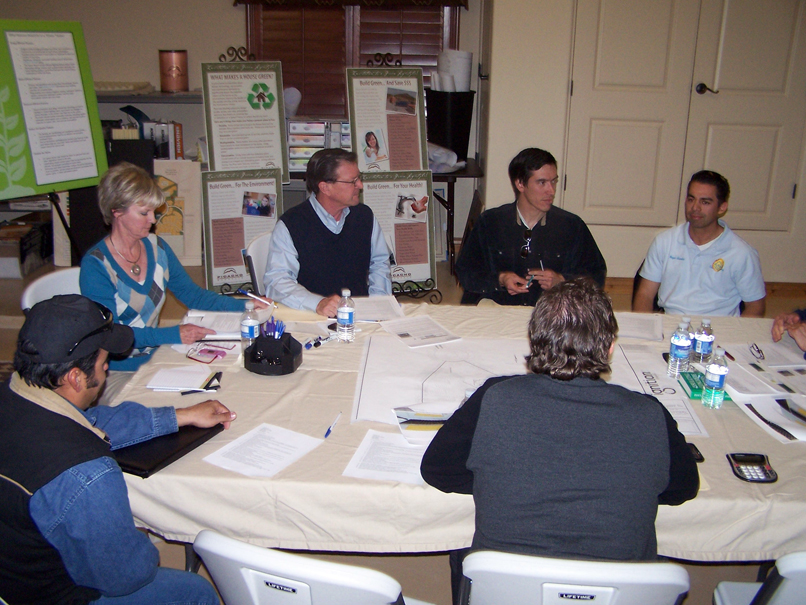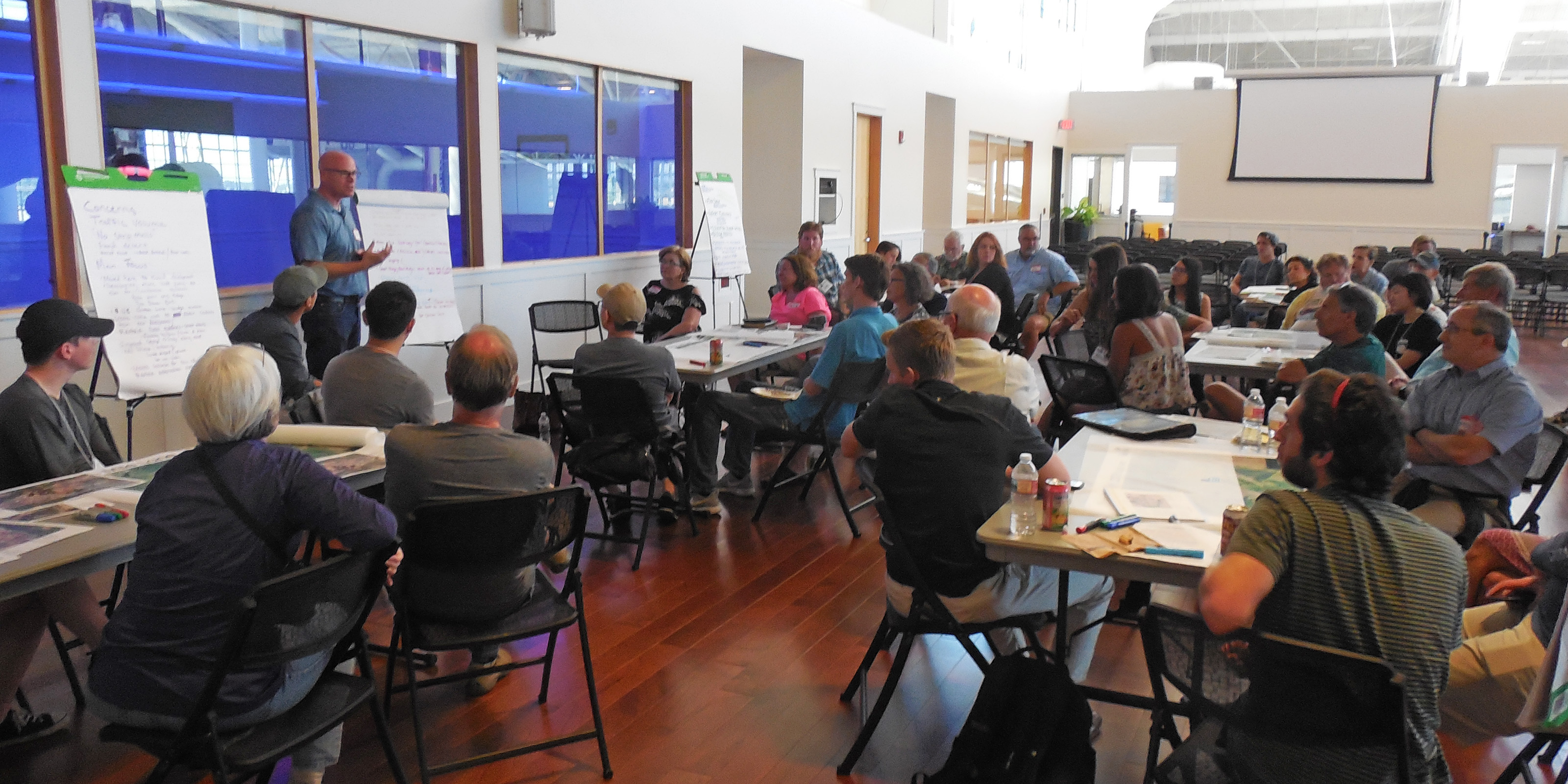Planning and Conducting Integrated Design ID Charrettes Whole Building Design Guide
Table Of Content

This assures that the project is well-informed and owned and supported by the key players. Projects that are conceived of and organized through a collaborative team approach will run more smoothly, thereby saving time and money. The very first phase of the NCI Charrette System incorporates the idea of becoming "people ready." This involves an intense effort to identify and engage with all people who are key to a successful project — those whose lives will be affected by the outcome. Collaboration on planning projects is a challenge because there is usually a large set of stakeholders with disparate viewpoints to engage. Efforts to involve everyone often results in meeting after meeting with slow progress, which can result in community fatigue and absenteeism rather than generating project support and momentum. Elected officials come and go during this time and group memory is lost, further slowing progress.
References and Resources
We have invited a team of Cornell Design students to visit our campus on May 3rd and 4th to harness the power of interdisciplinary collaboration to develop innovative solutions that prioritize the safety and well-being of our aging population. You might consider compiling a character design portfolio for a job search, taking on freelance projects, launching your own character design brand, and showcasing your work to family and friends. Design charrettes can be used to help with just a small upgrade to an apartment or condo all the way up to large-scale multifamily projects. Design charrettes have historically been facilitated in person and so a meeting space was required plus expenses were incurred by the participants due to travel, accommodations and incidentals. Wayne Beyea, AICP, is a faculty member and senior specialist within the Michigan State University School of Planning, Design and Construction's Urban & Regional Planning Program.
Purpose of Design Charrettes

Toole Design’s multi-day charrettes create the perfect venue for that collaboration. Our multidisciplinary teams help communities envision and then create the kinds of public and private spaces that they want, from trails, streets, and parks to plazas, downtowns, and neighborhoods. Rooted in meaningful community engagement and a commitment to listen and learn, Toole Design’s charrette process allows for quick field testing and instant feedback, building the long-term trust and buy-in necessary to make change happen.
Connected Thinking Frameworks
Meanwhile, community members drifted in during open studio hours — a time when the charrette studio is open to the public while the charrette team is working — with staff conducting tours of the works in progress. People with a particular stake in the project, such as property owners, were able to meet one-on-one with designers, who walked them through the emerging alternatives. While a large turnout was expected, NCI turned to the steering committee to communicate to its constituents the importance of attending the meeting. This, coupled with the communications in the interviews, assured a more well-rounded set of participants. During this meeting, community members completed a vision wall, a visual preference survey, and a strong places/weak places mapping exercise that helped draw out a community vision from participants.
By taking the time to review and refine the design during your design charrette, you can ensure that your project is on track to achieve its goals and create a solution that meets the needs of all stakeholders involved. The idea for design charrettes (from the French word charrette meaning “chariot” or “cart”) is believed to have derived from stories of architectural students in Paris in the 1800s. As the story goes, students’ exams were collected in a charrette, and some of these students continued to madly sketch together as their designs were being gathered for evaluation. The mission for this two-day event is to redesign a space to mitigate injury risks commonly faced by older adults using public health research, principles of design, and creativity to shape a safer environment.
Emerging Issues
The term can also be applied to shorter, focused project team meetings, project planning meetings, brainstorming sessions, and extensive community visioning events. Design charrettes are intensive, collaborative workshops that bring together diverse stakeholders to generate ideas, solve problems, and make decisions related to design projects. Originating from the architecture and urban planning fields, design charrettes have evolved to be used in various domains, including product design, community development, and organizational strategy.
What Are Design Charrettes?
Many planners and communities still struggle with removing barriers to participation for all. To answer this question is to understand the correlation between time and ideas during a charrette. Charrette, a French word meaning “chariot” or “cart,” derives from stories of architectural students in Paris in the 1800s.
Town Of South Kingstown: Old Tower Hill Road Vision Meetings - Patch
Town Of South Kingstown: Old Tower Hill Road Vision Meetings.
Posted: Mon, 11 Mar 2024 07:00:00 GMT [source]
Project Example

Considering the application of this system — preparation, the charrette, and implementation — through a case study brings it to life and demonstrates how the charrette system can defuse conflict and lead to positive outcomes. One such case study comes from Norman, Oklahoma, a college town where increasing demand for housing near the University of Oklahoma campus clashed with the preservation of neighborhood character. Planning processes have historically underrepresented groups such as minorities, low-income populations, and persons with disabilities, among others.
Charrettes take place in many disciplines, including land use planning, or urban planning. In planning, the charrette has become a technique for consulting with all stakeholders. Charrettes tend to involve small groups, however the residents participating may not represent all the residents nor have the moral authority to represent them. Thus most people (unless they happen to be design students) encounter the term "charrette" in an urban-planning context. After setting up the studio and acclimating the design team, NCI opened the charrette with a public event to gather input on the public's vision.
Planners often have to rebuild or establish trust with community members to advance planning work. Community planners face many challenges that are difficult to overcome, including lack of trust, fear of change, exclusion, entrenched thinking, specialty silos, and endless meetings. Promoting a collaborative atmosphere during your design charrette will not only lead to better outcomes for your project but also create a more enjoyable and rewarding experience for everyone involved. By creating a detailed agenda, you'll be setting your design charrette up for success and ensuring that your team can efficiently work towards creating the best possible solution for your project. The most effective approach to planning for and understanding potential outcomes of a charrette is to view reports from other diverse charrettes.
However, the need to have productive integrated team meetings, also known as design charrettes, has dramatically increased as planning for future disasters has become a priority. Today's damaged or destroyed cities and buildings need to be rebuilt better than before or risk repeated destruction. The charrette team's final presentation recapping the week's work was attended by more than 150 community members. The bulk of the 45-minute presentation was devoted to the City Center draft preferred plan, which showed where and how different sizes and uses of building would be accommodated. The most important drawings were 3-D renderings that showed building form strategies for transitioning from higher-density areas into adjacent lower-density neighborhoods because they were approachable and easy for people to understand.
Because people were embedded in the design process, they understand the plan and have a stake in the outcome. The charrette makes the best use of everyone's time by engaging people when their input will have the greatest impact. Contrary to a common misconception about charrettes, participants are not at the charrette all the time.
Comments
Post a Comment